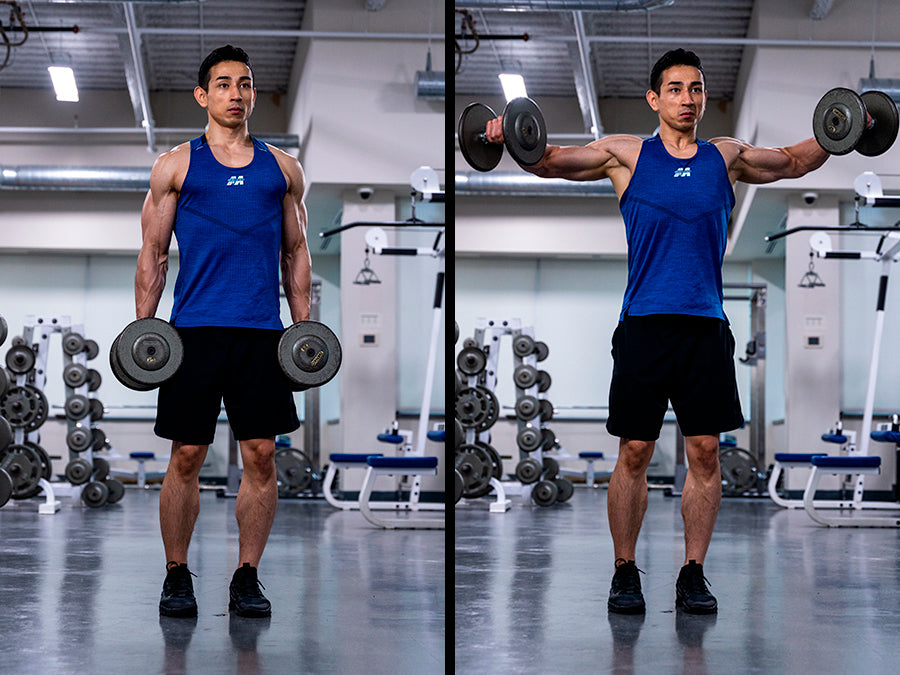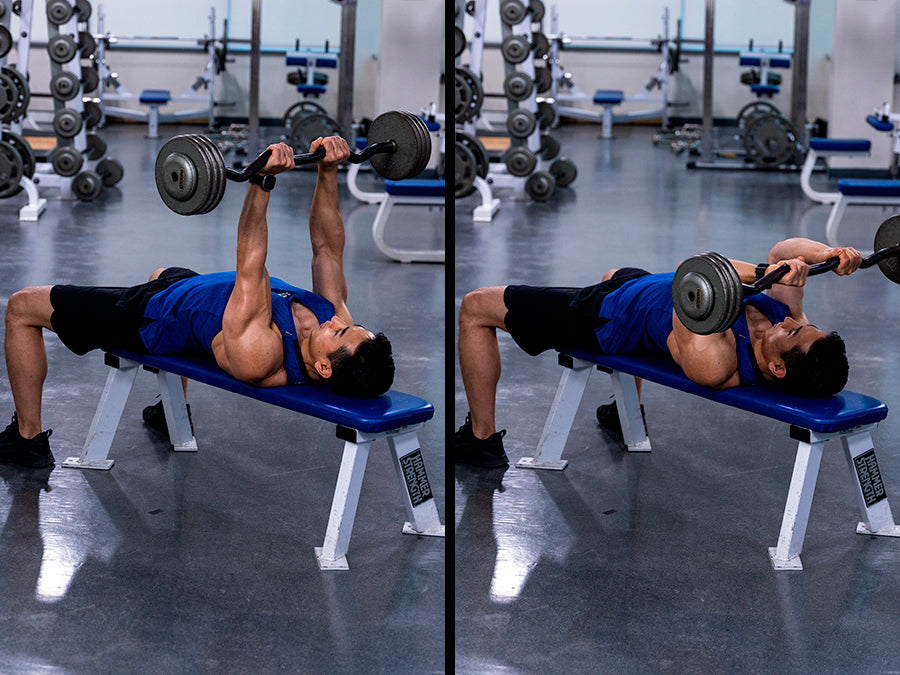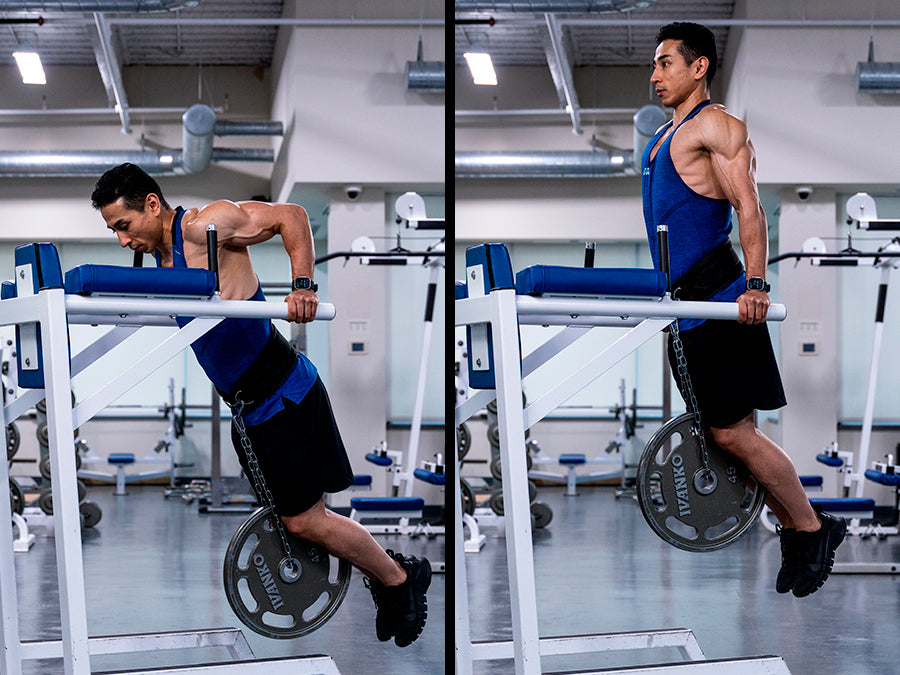Over the last few years, the old-school training split of Push/Pull/Legs has exploded in popularity, and for good reason.
I wrote about it right here on the MuscleTech site a couple of months ago and encourage any of you who hasn’t read that yet to click here to learn more about why it might be the best option for you.
There are suggested routines on there, but I thought it might be a cool challenge for me to boil down what I feel would be the absolutely best and most effective Push Day Workout routine that will deliver the most results for most of you.
On that note, after careful deliberation, here’s what I came up with so you can pack on some serious mass on your chest, shoulders, and triceps! This article is great for you even if you are new to bodybuilding.
Table of content
1. Incline dumbbell press
 I’ve been advocating for kicking off any chest routine with an incline pressing movement for years and will continue to do so. The vast majority of bodybuilders (and this term encompasses any of you who use weight training to build mass and improve the look of your physique) have most of their pectoral development in the middle and lower regions of the chest, and typically the upper chest is shallow in comparison.
I’ve been advocating for kicking off any chest routine with an incline pressing movement for years and will continue to do so. The vast majority of bodybuilders (and this term encompasses any of you who use weight training to build mass and improve the look of your physique) have most of their pectoral development in the middle and lower regions of the chest, and typically the upper chest is shallow in comparison.
Grab Offers on Protein Powders
That’s why I feel it must always be prioritized in order to achieve a balanced chest that’s thick from top to bottom, clavicles to sternum. You could start the workout with either a barbell or dumbbell incline press, but dumbbells make more sense for several reasons.
First, not all of us have training partners, and it’s a hassle getting a good spotter every time you need one. I don’t recommend ever doing any type of barbell press without a spotter, for safety reasons. If you get stuck under a heavy barbell, you’re screwed.
At least with dumbbells, you can always drop them to the floor in an emergency situation. Second, dumbbells allow you to move in your own body’s preferred motion track according to your own bone structure and limb lengths. Third, many people who struggled to get quality contractions and a good mind-muscle connection with a barbell almost immediately found they achieved both with dumbbells.
Push the ‘bells straight up rather than up and together, and strive to make the upper part of your pecs do the brunt of the work.
Warm-up: 2 × 20, 15
Sets: 3 × 12, 10, 8 (increasing weight)
2. Flat Smith or machine press
Now you can get to work on the rest of your chest! I don’t recommend using free weights as the second pressing movement, as the hard work with the incline dumbbell presses has already somewhat diminished your ability to balance and coordinate.
You’re better off with a machine here so you can focus entirely on pressing the weight and squeezing your pecs for dear life. As with any pressing movement for the chest, roll your shoulders back and down and pinch your shoulder blades together to ensure it’s your chest doing the work rather than your front delts and triceps.
Warm-up: 2 × 15, 12
Sets: 3 × 12, 10, 8
3. Pec flye machine
Our third and final chest exercise is a pec flye, and here you could use either a cable crossover setup or a seated machine, my personal preference.
Dumbbell flyes are a poor choice because gravity pulls free weights straight down toward the center of the earth, and flyes are an arc motion.
Shop & Save on Creatine Supplements
With dumbbells, you get zero effective resistance on the chest in the final third of the range of motion. With cables or a machine, you’re able to get that critical peak contraction as you finish each rep.
Warm-up: None
Sets: 3 × 15, 12, 10
4. Lateral raises
 For lateral raises, you have the option of using dumbbells or a machine, and both are highly effective. Use whichever gives you the best contractions in your medial/side deltoids.
For lateral raises, you have the option of using dumbbells or a machine, and both are highly effective. Use whichever gives you the best contractions in your medial/side deltoids.
If you’re using dumbbells, understand that this is a movement that typically loses effectiveness if you go too heavy. Swinging and heaving the weight up will do virtually nothing. If you can’t “catch” the weight for a split second at the top of the rep and feel the side delts contracting, suck it up and go grab a lighter pair of dumbbells.
Trust me, no one is ever going to ask you how much weight you use on lateral raises anyway.
Warm-up: 1 × 20
Sets: 3 × 15, 12, 12
4. Machine overhead press
The shoulders really only need two types of exercises, and I will echo what I said before about using free weights later on in workouts. I do feel the most effective pressing movement for shoulders is the seated dumbbell press, but your performance on them at this point in the workout would be significantly compromised because of overall fatigue.
Also Read: What Does Post Workout Mean?
Your ability to balance heavy dumbbells would be hampered, so a machine will come in clutch and allow you to still press some good weight. You still have plenty of oomph left to press overhead with; you just don’t have the ability to balance heavy weights.
You can use a Smith machine to the front of your body, or any quality seated press machine.
Warm-up: 2 × 15, 12
Sets: 3 × 12, 10, 8
5. EZ-bar skullcrushers
 It’s really a matter of personal preference whether you use a straight bar or a cambered EZ-curl bar for lying triceps extensions (aka skull crushers).
It’s really a matter of personal preference whether you use a straight bar or a cambered EZ-curl bar for lying triceps extensions (aka skull crushers).
Many trainers experience wrist strain and pain using straight bars and finding the angled contours of the EZ-curl bar eliminates that issue. The standard style is to do these on a flat bench, but I’ve found that a decline bench allows for a deeper stretch and thus a greater range of motion (ROM).
Also Read: The Hardgainer's Guide to Putting on Mass
It’s a little trickier getting the bar into position on a decline bench, so it’s helpful to have a training partner or spotter both hand you the bar to start the set and take it away once you’ve finished, if possible. Your elbows should be pointed straight up at the sky and remain that way for the duration of the set.
Depending on your relative arm length, you can lower the bar either to your forehead or behind your head. The key is to be able to start each rep from a stretch position and finish with your triceps fully contracted. Because these can be tough on the elbows, I have you warming up a bit more and keeping the reps a little higher as well.
Warm-up: 2 × 20, 15
Sets: 3 × 15, 12, 10
6. Overhead cable or dumbbell extensions
Now we turn our attack to the long head of the triceps, which can only be fully stimulated with the elbows in an overhead position. You could do a seated extension with a dumbbell or barbell, but again, at this point in the workout you’re usually better off with a cable so your energy can go toward working your triceps rather than trying to keep a free weight balanced and moving in the right plane of motion.
Save on Pre-Workout Supplements
Slipping out of that track under load can put your shoulder joints in a vulnerable position, so use a cable. You can either use a high cable pulley and face away from the weight stack, or else your gym might have a dedicated seated setup for this very exercise. Always get that stretch in the beginning of every rep.
Warm-up: 1 × 20
Sets: 3 × 15, 12, 12
7. Body weight dips
 We wrap things up with one of the absolute best body weight movements you could ever do, and one that ties all the pushing muscles together, the humble dip. Normally they might be too easy for some of you, but by this stage, having done all the other exercises for chest, shoulders, and triceps, your own body weight should suffice.
We wrap things up with one of the absolute best body weight movements you could ever do, and one that ties all the pushing muscles together, the humble dip. Normally they might be too easy for some of you, but by this stage, having done all the other exercises for chest, shoulders, and triceps, your own body weight should suffice.
If not, you can always use a chained belt to add resistance. After some thought, I came up with a way to make these even more effective for you. For the first two sets, keep your torso vertical so that the triceps will be forced to take on more of the workload.
For the final two sets, adopt a forward lean so your pecs can kick in to help drive your triceps into total exhaustion. The rep range should be 8 to 12 for all 4 sets. If you find yourself doing more than 15, go ahead and strap on a bit of extra weight.
Sets: 4 × failure
(First 2 upright, last 2 lean forward)
The Ultimate Push Day Workout
Incline dumbbell press 3 × 12, 10, 8
Flat Smith or machine press 3 × 12, 10, 8
Pec flye machine 3 × 15, 12, 10
Lateral raises 3 × 15, 12, 12
Machine overhead press 3 × 12, 10, 8
EZ-bar skullcrushers 3 × 15, 12, 10
Overhead cable or dumbbell extensions 3 × 15, 12, 12
Body weight dips 4 × failure
3 tips to get the most out of your Push Day Workout
Do this after a rest day
Because the standard schedule to perform the Push/Pull/Legs split is in that order followed by a day off after repeating, chances are that you hit your Push Day workout after a rest day anyway. But because the routine is versatile and rest days can be inserted as needed, some of you might be hitting the Push Day after legs.
To give your chest, shoulders, and triceps the best chance at optimal performance on that day, I strongly suggest you precede that workout with a rest day. Even if it’s true that there is technically no overlap between your lower body and the pushing muscles of your upper body, any workout will stress the central nervous system (CNS), but legs even more so.
Learn how to do weighted dips!
Eat up!
Along with being properly rested before Push Day, it’s critical that you’re also adequately fed and watered. In other words, always make sure you have at least one substantial solid meal before that workout, if not two or three. If you do have cheat meals on any regular basis, schedule one the night before your Push Day workout. Put all those extra calories and carbs to good use to fuel a monster training session!
Always warm-up
Many of you, and I’m really looking hard at you younger dudes now, are typically eager to get into the heavyweights and work sets and may skip right past the warm-ups listed.
For the sake of your shoulder joints, your elbow joints, and the tendons and ligaments around them, please don’t do that! You might be able to get away with such a reckless and impatient approach for a while, but it won’t be long until you start feeling the nagging pains of chronic tendonitis, which over time usually advances into full-blown arthritis.
You know those middle-aged guys you snicker at with the neoprene elbow and knee sleeves who are always complaining about their shoulder and elbow pain? How do you think they got that way?
You want to be able to keep training hard and heavy and making gains for many more years to come, so take the time to warm up. Additionally, if you ever feel like your muscles and joints aren’t quite ready, never hesitate to do another warm-up set or two. An ounce of prevention really is worth a ton of cure in this case.





